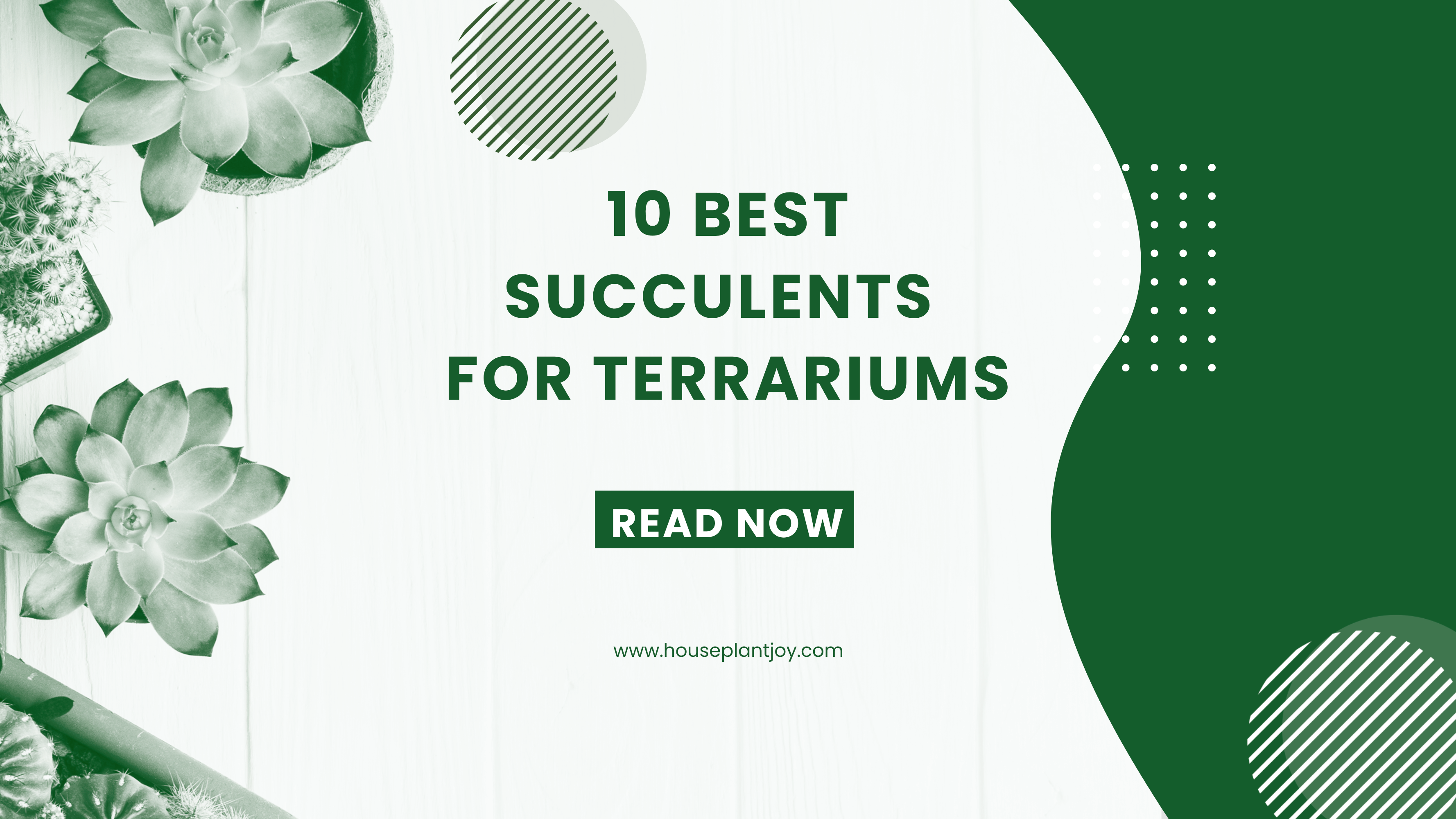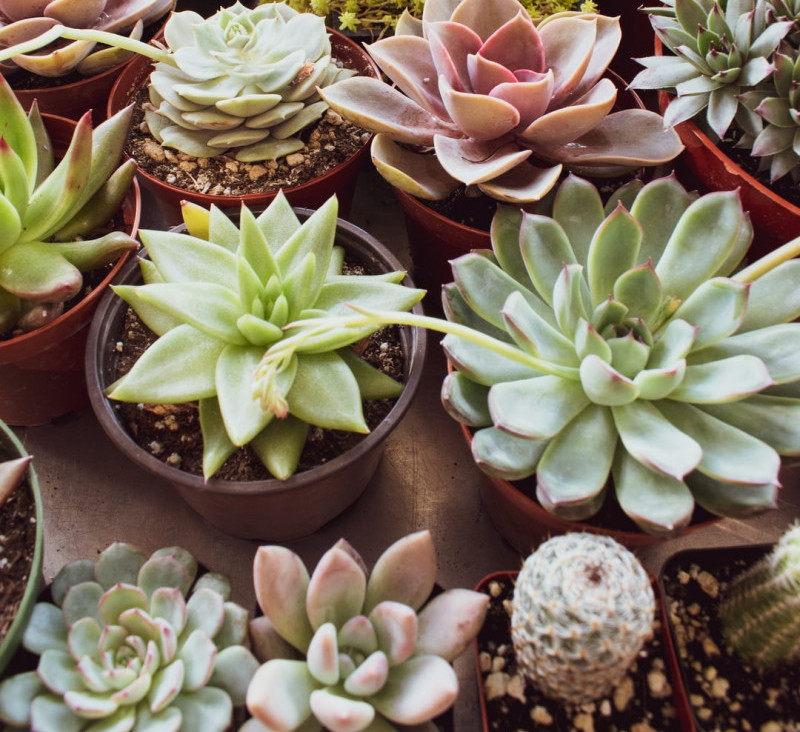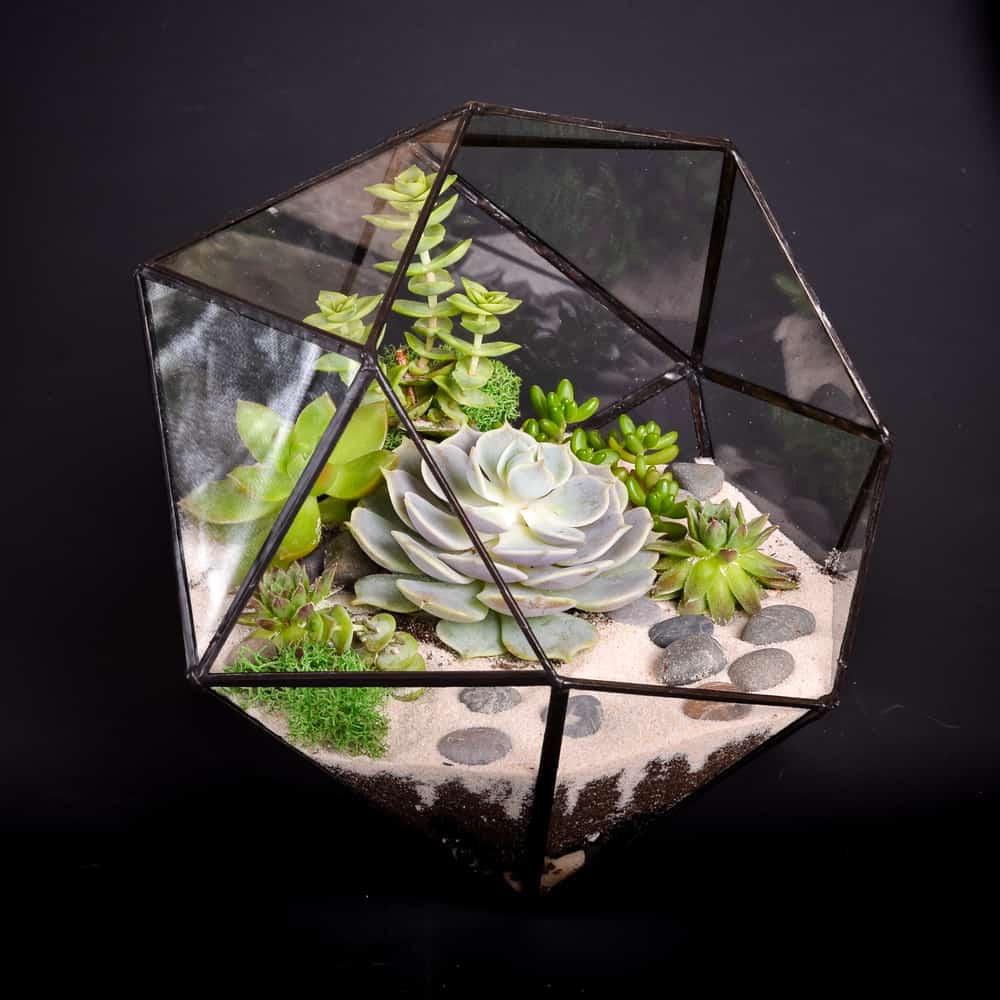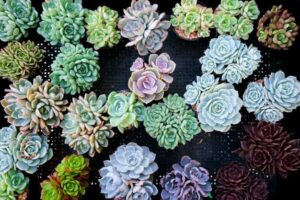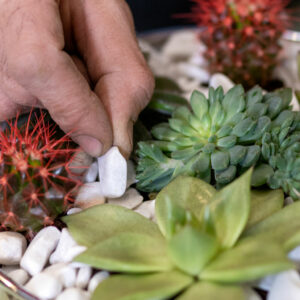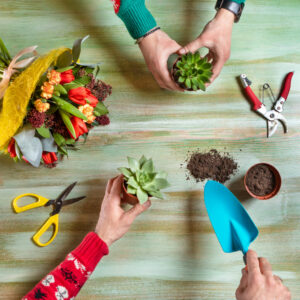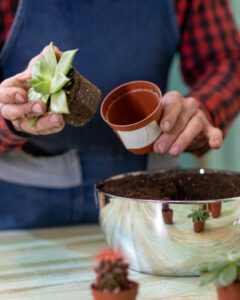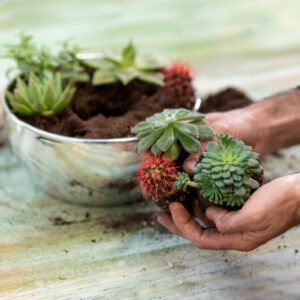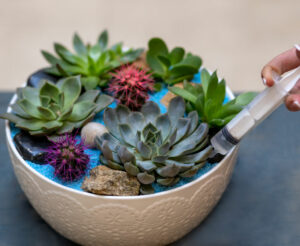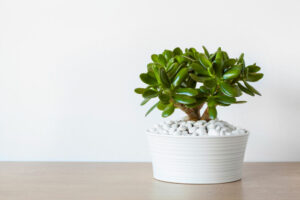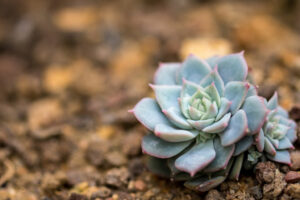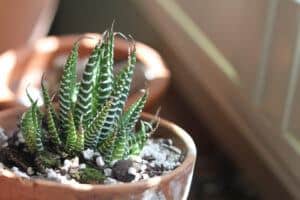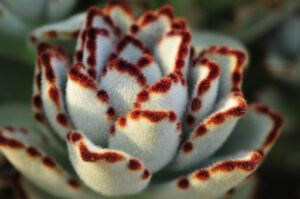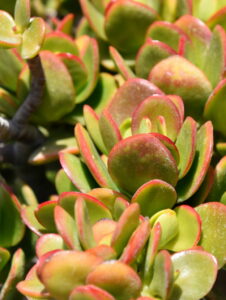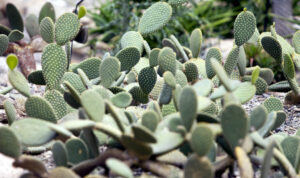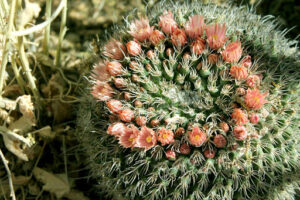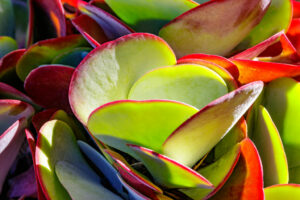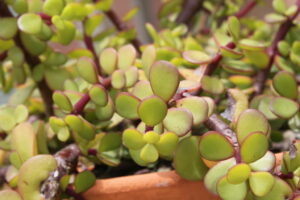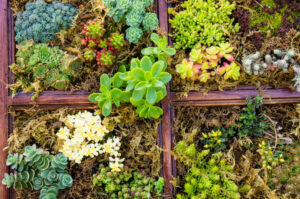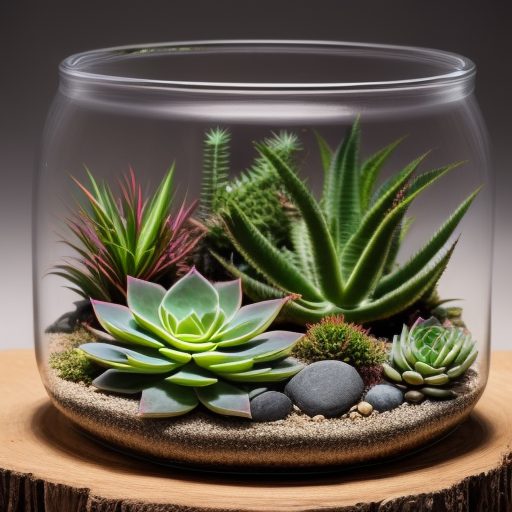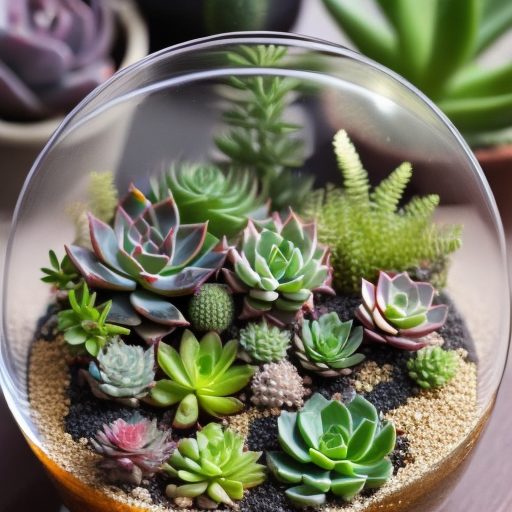HousePlantJoy is supported by our audience. When you purchase through one of our links, we may earn a small affiliate commission. As an Amazon Associate I earn from qualifying purchases. Your cost is not affected.
==================
Crafting a captivating miniature world with suitable succulents is a green enthusiast’s delight, offering low-maintenance, natural beauty within glass walls. These miniature gardens thrive in glass enclosures and offer a mesmerizing glimpse into the world of succulents.
In this article, we’ll introduce you to the “10 Best Succulents for Terrariums.” Whether you’re a seasoned, succulent enthusiast or just starting your green journey, these carefully selected succulents, including the best terrarium succulents, are the ideal inhabitants for your miniature botanical wonderland.
Making terrariums is fascinating. But if you’re wondering, what are the best plants you can use in your terrarium?” Well, we will go over how to choose the best plants for terrariums. The 10 best succulents for a terrarium for this year are here now. We’ll also help grow succulents. Let’s go!
What Are Succulents?
Succulent refers to any plant with thick water storage flesh. Some succulents can restore water to their leaves and stems, while others cannot. Most common foliage plants thrive in bright, sunny locations. Terrariums are perfect for busy people.
Succulents can survive in low moisture regions. A distinctive adaptation allows them to store water in tissues. Many believe these plants restrict arid regions. But others don’t know that you can also find this in forests and dry tropical areas.
With their low maintenance need and unique appearances, succulents became popular. Making it one of the best plants when setting up a terrarium. Succulent plants enhance the appeal of your garden and add personality and distinction.
5 Main Benefits of Succulents
Various benefits make these plants popular indoors because they store water in their leaves and stems. Below are the benefits of succulents indoors:
1. No matter what the climate, they can brighten up a home. People love to grow succulents as houseplants. They are easy to care for, versatile, and long-lasting. Adding greenery to your home no matter the season. But they will also bloom in season, thus adding color to the living space.
2. A Natural Air Purifier. Succulent plants, particularly those dedicated to growing succulents, can purify the air in your home by removing fumes and pollutants. The volatile organic compounds (VOCs) are effectively eliminated as succulents utilize the pores on their leaves to get rid of most toxins. This process allows them to absorb pollutants from the air and store water in their tissues, aiding in their ability to survive drought.
3. Succulent Plants help reduce stress. Several studies show that people providing proper care to indoor succulents are less stressed than those who don’t. Returning home and checking your plants reduces stress levels and calms you down.
4. Adapts To Circumstances. Another one of the benefits of succulents is that they can adapt. In their native environments, succulents are accustomed to dry and sunny areas. But, when succulents adapt to wetter climates, they often adapt to their new surroundings.
5. Easy to take care of. A succulent terrarium is a good choice for a gardening beginner.
Terrariums for Succulents
A terrarium is a glass container that creates a mini-ecosystem with living plants, classified as closed terrariums, or open terrariums. Terrariums are ideal environments for succulents, as they can be grown with minimal care. A lot of moisture is not ideal for succulents, especially when considering the best succulents for a terrarium. So it is important to make a few modifications to the standard terrarium to keep the soil from becoming soggy.
How to Care for a Succulent Terrarium?
Here are a few tips to take care of your succulent terrarium:
1. It is possible to grow plant succulents in a various range of containers. An open system will prevent excess moisture from damaging the plant.
2. Leaving succulents standing in water will kill them. They are sensitive to overwatering, and they can’t handle it. So you won’t have to water your succulent garden often.
3. Soak the soil in water until drainage holes stream while watering the succulents. Watering succulents with a spray bottle can lead to brittle roots and rotting foliage.
4. Ensure that the terrarium is well lit, but do not expose it to the sun so as not to scorch the plants.
5. Make sure your terrarium plants stay well-watered and trimmed when they become swirly. It is not advisable to allow plants to contact the terrarium glass containers.
6. Keep your terrarium away from radiators, as they can damage plants.
7. Specific soil types for succulent plants are a good consideration. If you happen to want to grow them in a terrarium.
8. The most common bugs you’ll encounter when setting up a terrarium are gnats. In general, gnats will only surface if the soil stays too wet. Using a well-draining soil mix and letting the soil completely dry out between irrigations will help you avoid gnats.
Step by Step on How to Make a Succulent Terrarium
Terrarium plants are perfect for succulents because they are small, beautiful, and easy to maintain. Here, you will find information about making your succulent terrarium. And step-by-step instructions on what you will need to make this beautiful planter.
Make sure to ready your terrarium kits. Following are the steps you should follow to create a succulent terrarium:
Get Ready
Prepare the materials that you will need. Make sure you have everything you need ready when setting up a terrarium to save yourself some time.
Create Drainage
Fill your container with sand, gravel, and charcoal to form a base. By doing so, you will ensure your terrariums will have a good drainage system.
Succulent Soil Mix
Add the potting mix soil. A succulent potting mix is the best choice. Mixing it with citrus and palms is fine. The soil should be a light, drain, and allow adequate air circulation.
Arranging Succulents
Place the succulents one by one in a careful manner. Choose a variety of shapes and colors for visual interest. But stick with plants with similar watering needs to simplify maintenance.
Terrarium Decoration
You can now decorate your terrarium garden with your chosen stones or pebbles. You can add whatever you want that won’t damage your plants, like notes, laces, or mini figurines.
Succulent Hydration
Make sure to water your succulent terrarium no less than once a week. Collecting rainwater for your succulents is advisable. Tap water contains minerals that may damage your plants.
What Kind Of Plants Grow Best In A Terrarium?
Succulents for terrariums make beautiful to any living space and are ideal for terrariums. They resemble miniature greenhouses due to their ability to hold in a dry, desert-like atmosphere. Their beauty fits well with any home. Besides, as long as they receive the proper amount of light and moisture, they are quite easy to maintain. So, choosing a vessel and getting started with your terrarium garden will need you to determine the best plants.
When setting up a terrarium, it can be hard to know what plants to use and what containers are best for them, especially if you’re considering a few succulents or hardy plants. As we go on, I will be showing you an overview of the most common succulents for terrariums, along with some advice and benefits of succulents. Let’s go!
Unlock the enchanting world of succulents in captivating terrariums. Elevate your indoor greenery game with our top picks. #ads #commissionsearned
Top 10 Succulents for Terrariums
Terrariums with succulents have already been discussed, including how to care for them. Now we will see what succulents make the best terrarium plants:
1. Jade Plant
Jade plants promote growth, bring luck and prosperity into homes, and aid healing. Making it perfect as a terrarium for also being easy to care for. Jade plants for terrariums like humid conditions and bright, indirect sunlight. Having this makes a good addition to your interior design. Placing this jade plant on a gorgeous fishbowl terrarium makes it a perfect succulent. Remember that watering the jade plant terrarium is essential when topsoil feels dry. Never let it get too wet, neither too dry!
Jade Plant Terrarium is popular because it thrives in low humidity and bright light. The desert is home to the jade plant, which has thick leaves and needs light and low humidity. Several varieties of Jade plants exist; avoid the large ones! Have this in your simple terrarium.
2. Echeveria Plant
Echeveria succulents, or “hens and chicks,” are one of the easiest succulents to grow indoors. They thrive in terrarium-like right conditions but only if they’re planted among other desert plants. There are wide varieties of echeveria with different colours and leaf shapes. It always grows in a radial pattern, like a starburst. It would look perfect in a geometric terrarium. The aesthetic will radiate and would be an eye-catcher in your home. Choose a terrarium that doesn’t contain a lid to grow echeveria in your home. It prevents water accumulation and root rot.
Wondering what other factors this plant posses? Let us talk about the echeveria plant benefits as a chosen succulent for your terrariums. Echeverias are a stylish and unique type of succulents. It can fit in any stylish container. Making it more fit for your terrarium garden. These plants are usually easy to care for and make suitable starter plants for beginner gardeners. The hybrid varieties are expensive, while common varieties are cheaper.
3. Zebra Plant
This plant is a Brazilian herb native to the Amazon rainforest. Zebra plants are popular succulents with their unique leaves, white veins, and vivid bloom. Its golden bracts are several inches long when it blooms. Making it more perfect for indoor gardens. Having a zebra plant only needs little maintenance and care and a beautiful houseplant. Perfect for your cool terrariums.
Zebra-striped plants need bright, indirect light and a humid environment. Keep their soil wet without having to over water them.
Is Zebra Plant a Cactus or Succulent?
Although the name suggests otherwise, this plant is not a cactus but a succulent. Remember that cacti belong to the succulent family. A part of the larger group known as succulents. Not all succulents are cacti, and not all cacti are succulents.
4. Panda Plant
The Panda plant is a great choice for filling your succulent terrarium. It has gorgeous, distinctive foliage, and the leaves have a felted appearance and feel. Has an exotic-looking indoor plant that bears a striking resemblance to a panda. Making it a terrific choice for terrarium glass containers would give off an elegant vibe in your household. Remember that it prefers low humidity and well-drained, humus-rich soil that is watered.
This plant’s leaves also feature speckled edges that look fantastic against leathery surfaces. The Panda plant is an excellent succulent terrarium since it thrives in partial shade. Requiring a little water and only grows to reach 50 cm tall.
Can Panda Plant Grow Indoors?
Yes, the panda plant is easy to grow as a houseplant. It can adapt well to indoor conditions and doesn’t need water frequently. The plant grows up a few feet higher in its natural habitat. But as a houseplant, it grows up to 1.5 to 2 feet tall, with a thick stem. It produces several groups of leaves and can be pruned to resemble a bush as it matures. When you grow panda plants inside the house, it is recommended to be placed near a sunny area inside the house.
5. Kalanchoe Succulent
The kalanchoe is a succulent that is native to tropical climates. It requires little maintenance and has available bloom colors making it a perfect succulent for terrariums. Kalanchoe is affordable and ideal for use in terrariums because of its slow growth rate.
Trimming is essential for kalanchoe to keep it looking fresh and colourful. Most of the year, the plant blooms with bright flowers that stay strong and beautiful for a long time. So, including this when setting up a terrarium makes it more perfect. Having kalanchoe terrariums as a gift makes a good consideration too.
Kalanchoe plants should be out to full sunlight. The leaves will die back if there is insufficient light. The kalanchoe plants prefer warmer temperatures than most succulents and well-drained soil. Besides, they do best when the soil’s surface dries out between waterings.
Types of Kalanchoe Succulent
Here I’m going to introduce you to the three main species of Kalanchoe. Consider adding these succulent terrariums to your terrarium garden.
Kalanchoe mangini – Chandelier Plant
Kalanchoe Mangini is a succulent plant with arching branches. The stems have upright, glossy green leaves that are round and turn reddish under full sunlight. People usually grow it indoors, but this plant still requires plenty of sunlight no matter where it is keep. It also needs regular watering during the summer months.
Kalanchoe pinnata- Cathedral Bells
Kalanchoe pinnata is asucculent perennial plant that grows in tropical and sub-tropical climates. You can also add in your terrariums for more visuals. A distinguishing feature of kalanchoe pinnata is the formation of tiny plantlets on the margins of Phylloclades.
Kalanchoe luciae – Paddle Plant
Unlike most succulents, paddle plants have flat, round leaves and grow in a rosette. The bold textures, colors and forms of this charming houseplant make it an eye-catching addition to a terrarium garden. This succulent doesn’t need much care. A drought-resistant plant such as this can also be grown outside in good conditions.
6. Angel’s Wings (Bunny Ears)
Bunny Ears, also called angel’s wings, is a succulent that would be perfect in a desert terrarium. Bunny ears are a stunning succulent that is easy to grow. These plants have thick pads with short, furry bristles, called glochids. It usually grows in pairs like rabbit ears. The species blooms in dry, low-humidity climates as long as enough sunlight is available.
A bunny-ears make a unique terrarium. It is as cute as its name and will make you feel better. Cactus pads that resemble rabbit ears have tiny white hairs that make them appear fluffy.
Always handle this plant with care. They contain glochids, which are sharp little spikes. Wearing gloves is a huge help when propagating bunny ears to protect against the glochids.
They grow to 4 to 5 feet in their native environment. Also, they grow slowly. So medium or large terrariums recommend when they outgrow smaller ones. Plants with these pads mature into bright green leaves, and the cream-coloured flowers bloom in the summer. After the flowers mature, the purple globular fruit appears.
Is Bunny Ear Cactus Poisonous?
The bunny-ears cactus is not toxic or poisonous. It can be a good option as a part of a succulent terrarium. But touching it with your bare hands can cause skin irritations. Handling it can be accomplished by using nitrile-coated gloves. Though this cute plant is not poisonous, its spines can still irritate your pets. But these are not poisonous or toxic though. They’ve become a nuisance in some parts of the world, where they’ve entire overgrown landscapes.
7. Pincushion Cactus
The pincushion cactus is an attractive succulent for a terrarium. Making it perfect if you want to add a colorful touch to your unique terrarium. This plant produces an adorable flower, making it one of the most beautiful plants you’ll ever see. The small flowers on this cactus add a delicate touch to your cactus terrarium. Exposing it to direct sunlight appreciates the plants but waters it when the soil dries.
Though it is a great option for many terrariums, you must know that this plant has light requirements. It needs bright light, so only use it if you can provide a light source or if it gets morning sun every day. Remember that the pincushion cactus needs water but is not overdone. The best time to water cacti is about once every two weeks or so, with a slight change according to the needs of each plant.
8. Flapjacks Succulent
Flapjack succulents have a natural, flat appearance. It is also called “Goat’s Ears” succulents because of the shape of their leaves. This plant is unlike any other plant. Because of their distinctive flattened sides and disk-like leaves curl up on either side. They are ideal for terrariums due to their attractive but elegant appearance.
But how do you care for a flapjack succulent? Flapjack succulents are low-maintenance plants that can be grown both indoors and outdoors. They don’t need much water or light to stay healthy. Making them perfect when setting up a terrarium, but they also survive outdoors.
This beauty can sometimes be a sensitive succulent. Always wear gloves when handling it and wash your hands afterwards to protect it from harm. Ensure to keep pests away. Especially with children if they don’t know how to take care of the plant.
9. Elephant Bush Succulent
The elephant bush is a great plant for terrariums, though it can grow quite large. Pruning can be done with this plant with its compact varieties like bonsai trees. Elephant bush succulent suits for combining with other succulents that need similar conditions and care.
It has bright red leaves and stems and is a small succulent plant. It gets its name because it’s a favorite of African elephants that eat its leaves. The plant is available in several variants with scarlet leaves, stalks, and stems.
The soil you need to grow elephant bush should be well-drained, and the container should have holes for drainage. The plant can be grown indoors near a sunny window, but make sure to move your succulent terrarium to a shady area. Because strong sunlight might cause the leaves to burn and fall off.
Is Elephant Bush and Jade Plant the Same?
Portulacaria Afra, or Elephant Bush, is often mistaken for Crassula Ovata ‘Jade Plants’. Because of their visual commonalities. Despite their similarities and similar foliage and growth patterns, these two species are unrelated or the same. To distinguish these plants, remember that Portulacaria Afra may need support because it produces growth that droops. At the same time, the Crassula Ovata grows naturally upright, sometimes giving it a ‘spikey’ and untidily upright appearance.
10. Sedum Succulent
Having sedum plants in your terrarium garden is excellent for creating a mini-ecosystem in your living space. Sedum leaves are covered in a waxy coating and tiny flowers with bold colors. Making sedums stand out in the garden. Growing sedums indoors is easy, but you’ll need to choose a suitable variety and provide optimal conditions.
Sedum houseplants thrive in bright light and warmth but ensure you do not place your terrarium containers in an area where direct sun hits. It still needs protection from the sun’s rays in hot climates. Choose a window with shade during midday to avoid leaf burn or hang sheer draperies over it. Sedums don’t need much soil, but they do need good drainage.
How to Water A Succulents Terrarium?
To keep your terrariums thriving, give them a drink of water only once or twice a week. Never let the plant get soggy; it will start to rot if you do. The leaves of succulents have a system for storing water that they can draw from if they need additional moisture. Observe, and give your plant a little more water if you see it wilting or wrinkled. Additionally, you can water a small terrarium about a cup at a time and wait for each bit of water to be absorbed before adding more. Stop watering as soon as the soil feels moist to the touch.
Our Best Succulents for Terrariums
Displaying Terrariums is the best way to showcase the collection of your favorite succulents. They’re fun, decorative, and portable. You create beautiful arrangements by choosing the right succulent for your terrarium garden. May it be a small or large container.
We recommend as the best succulents for terrariums is echeveria. The beautiful rosette succulents come in an array of beautiful pastel colors. It does well indoors when given enough light. It is an easy-to-grow plant and easy to propagate. The appearance is also gorgeous and would fit your home and give off a refreshing vibe. Or even have a terrarium gift set for someone!
Succulents can live and even thrive in terrariums, given the right environmental conditions. Watering once a week, proper ventilation, good drainage, and morning sunshine are essential. It will be delightful if you share this with others if you find this helpful.
Once more, journey into the enchanting world of terrariums and elevate your indoor oasis with our curated succulent selections. Transform your space into a lush, miniature paradise today. #ads #commissionsearned
Embrace the Green Magic: Your Terrarium Journey Awaits!
As we draw the curtain on our exploration, your journey into the world of terrariums and succulents is just beginning. Armed with the knowledge of the best succulents for these captivating glass gardens, it’s time to roll up your sleeves, get creative, and craft your very own green sanctuary. Let your imagination run wild, experiment with different succulents, and watch as your terrarium comes to life. Whether you’re a seasoned enthusiast or a newbie, remember that the magic of terrariums lies in their ability to showcase the beauty of nature in a small, self-contained world. So, go ahead, dive in, and let your green adventure flourish!
Video Credits: @TerrariumDesigns
Frequently Asked Questions
What's the Ideal Size of a Terrarium for Succulents?
The size of your terrarium should allow enough space for your selected succulents to grow comfortably. Typically, a small to medium-sized glass container or vase works well.
Do Succulents Need Special Care in a Terrarium?
Succulents in terrariums require well-draining soil, indirect sunlight, and occasional watering. It’s crucial not to overwater, as terrariums can trap moisture. Use a well-draining mix and monitor their growth.
Can I Mix Different Succulent Species in the Same Terrarium?
Mixing succulent species is possible, but choose ones with similar care requirements. It’s best to select succulents that share similar light and watering needs to ensure they thrive together in the same terrarium.
Can I Use an Open or Closed Terrarium for Succulents?
Succulents generally thrive better in open terrariums, as they prefer good air circulation and lower humidity levels. Closed terrariums may trap too much moisture, leading to potential issues like mold or rot. Opt for an open terrarium to create an ideal environment for succulents.
What are Some Creative Ways to Arrange Succulents in a Terrarium?
Get creative with your terrarium design by combining different colors, textures, and heights of succulents. Consider using small stones or decorative sand for added aesthetics. Experiment with arrangements to create visually appealing landscapes within the confines of your terrarium.
Stay in the Loop: Follow Us Today
Embark on an exciting journey with us by joining our vibrant social media community! By becoming part of our social family, you’ll gain access to a world of inspiration, interactive discussions, and special promotions.
Together, we’ll turn ordinary moments into extraordinary memories!
Related Readings

